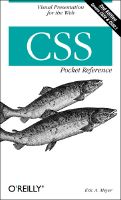Of Site Styles and CSS Columns
Published 21 years, 3 months pastThanks to a post over at Simon’s weblog, I discovered that the Mozilla 1.8a3 readme file tells us of some interesting CSS-related developments:
- Users can now disable CSS via Use Style > None or a global preference (bug 32372.)
- Mozilla now supports a at-rule for matching on site/document URL. Among other things, this makes site-specific user style rules possible (bug 238099.)
- Preliminary support for CSS columns has been checked in to Mozilla bug 251162.)
The middle of the three is what Simon wrote about, and it’s indeed very cool. CSS signatures would never have been necessary if browsers had always supported per-site styles. I’m not entirely thrilled about the syntax, but it’s a good start. And for those who are wondering how I could support a non-standard extension, I’ve never been against them as long as they were clearly marked as such. Microsoft’s extensions (behavior, filter, the scrollbar stuff) weren’t, which inevitably led to confusion. The Mozilla stuff is marked in such a way that you can tell it’s an extension, and in a way that won’t conflict with future CSS.
I’m happy to see that Mozilla will finally let users easily disable CSS. For those who need the text view, say because they have poor vision, it will be a welcome feature. For those who want to quickly check the document’s unstyled rendering, it will be similarly useful.
But I’m most intrigued by the addition of “preliminary” support for CSS columns. This would allow you to declare that a given element’s content should be flowed into columns, complete with auto-balanced heights and everything. For example, if you wanted a list flowed into two columns, you could declare:
ul {-moz-column-count: 2;}
That would split the contents of every undordered list into two halves, filling the first column with the first half of the list and the second column with the second half. Thoroughly awesome. See the CSS multi-column layout module for more details, although I don’t know how much Mozilla actually supports at this juncture.
Update: it turns out that column support isn’t present in Mozilla 1.8a3, contrary to the release notes. I’ve been told that it will be present in 1.8a4.
